An Early Spring Spectacle: 10 Spots in and Around Tokyo for Plum Blossom Viewing
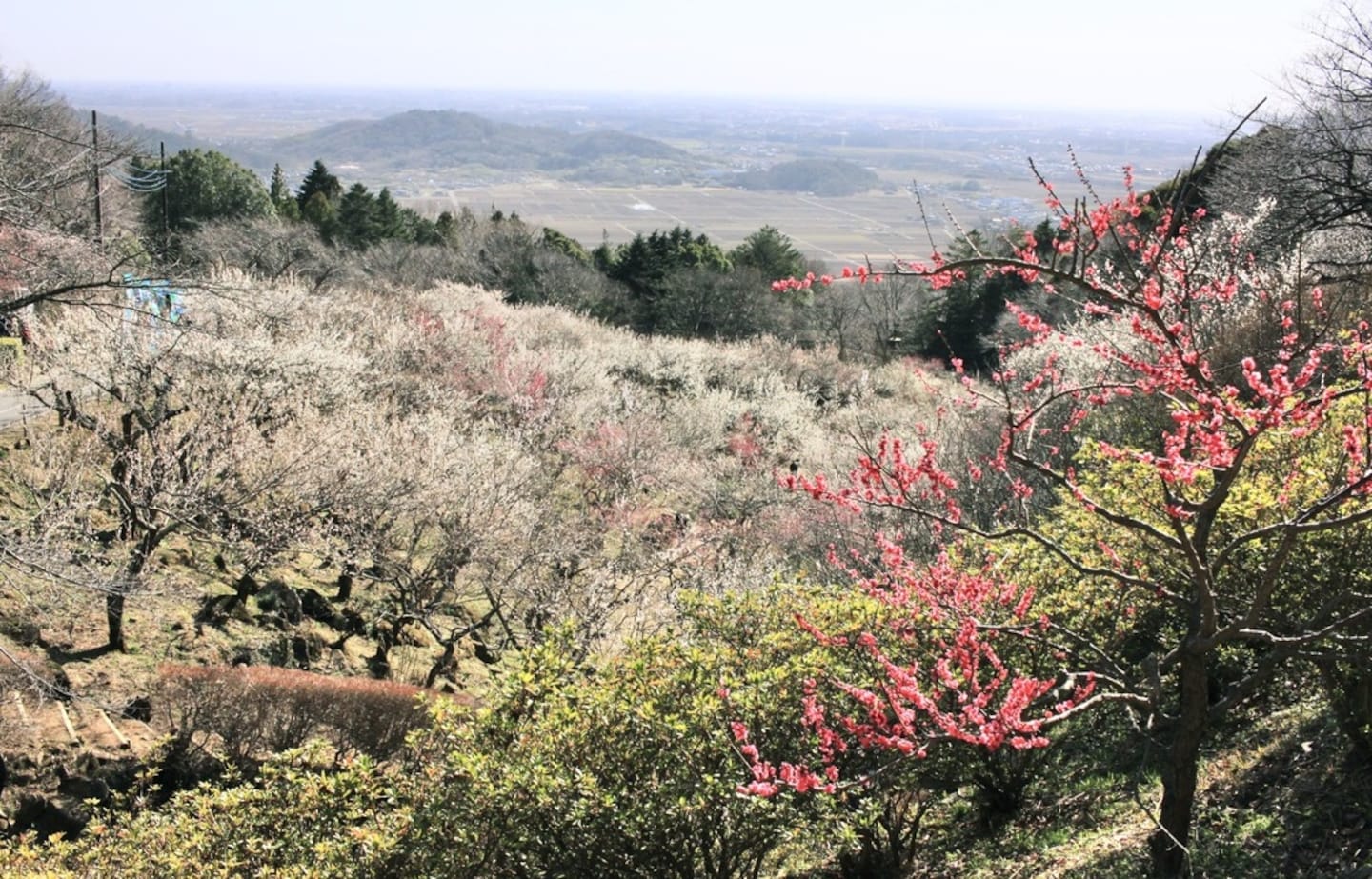
While cherry blossoms often take the spotlight in late spring, plum blossoms are their lesser-known early blooming cousin you should look out for! Cassandra Lord picks the best places to go plum-blossom viewing near Tokyo.
By Cassandra LordThey may not be as fluffy as cherry blossoms, but plum blossoms are often more fragrant and come in different shades, varying from snowy white to vibrant fuchsia pink. Thanks to the cooler weather and lower popularity, these gardens are usually much more peaceful at their peak than cherry blossom gardens are during theirs.
Plum in Japanese is "ume" or "bai," so a lot of plum gardens around Japan are called something like Baien (plum garden) or Bairin (plum grove). Here's a look at eight plum gardens around Tokyo and two in nearby prefectures. Different types bloom at different times, but usually the best time to see them is from late January to early March.
Ikegami Baien
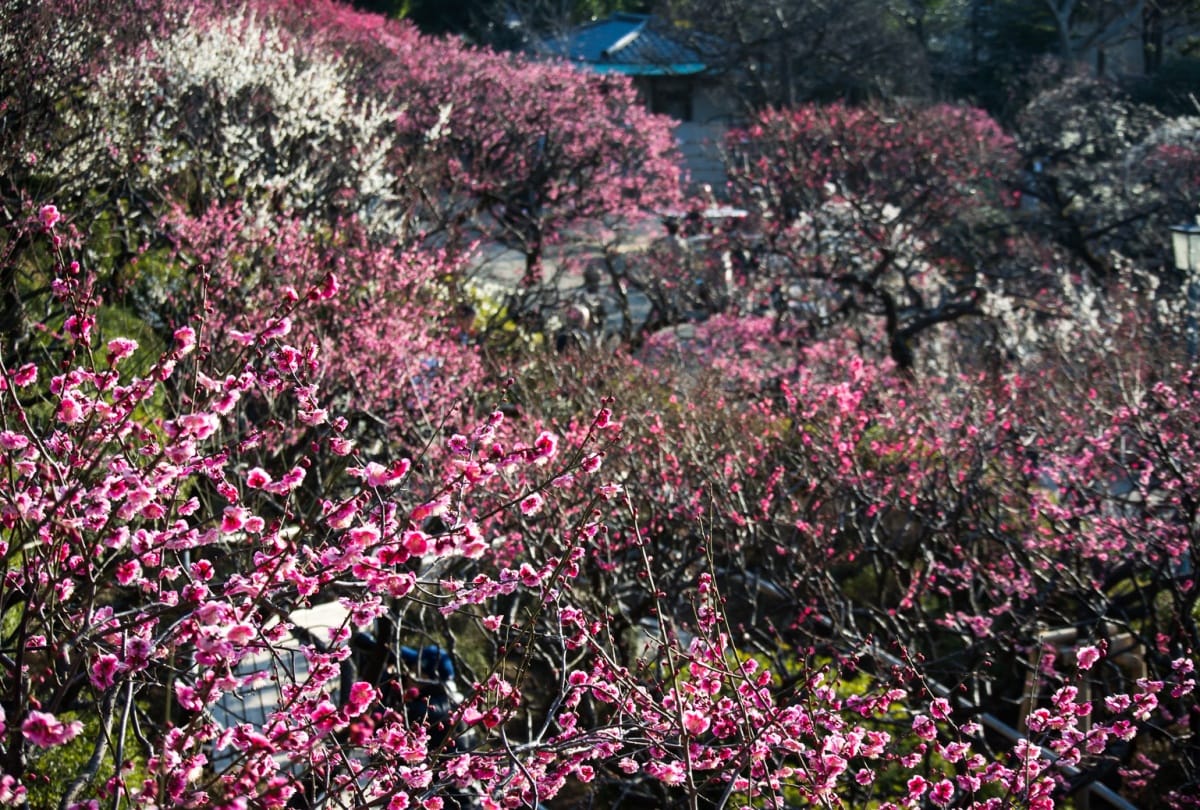
Ikegami Baien Plums by Tranpan23 https://flic.kr/p/dYtrwx
First up is Ikegami Baien, a hillside garden in Ota "City," a Tokyo district near Haneda Airport. The plum blossom is, in fact, the Ota's official flower, and the garden has 370 plum blossom trees of 30 different varieties.
The garden was once the home and studio of famous artist Shinsui Ito, but it was destroyed in WWII, and later converted into a plum garden. It opened to the public in 1976.
The garden is a beautiful and quiet place to walk around, with the best time for the blossoms usually being around mid-February to mid-March. In the gardens there are also two tearooms called Seigetsuan and Chouuan. There are azaleas and peonies as well, making the garden a nice place to visit year-round.
Access from Tokyo Station: Around 45 minutes total via Yamanote and Asakusa Lines.
More information: https://unique-ota.city.ota.tokyo.jp/en/charm/nature/ikegami-baien/
Koishikawa Korakuen
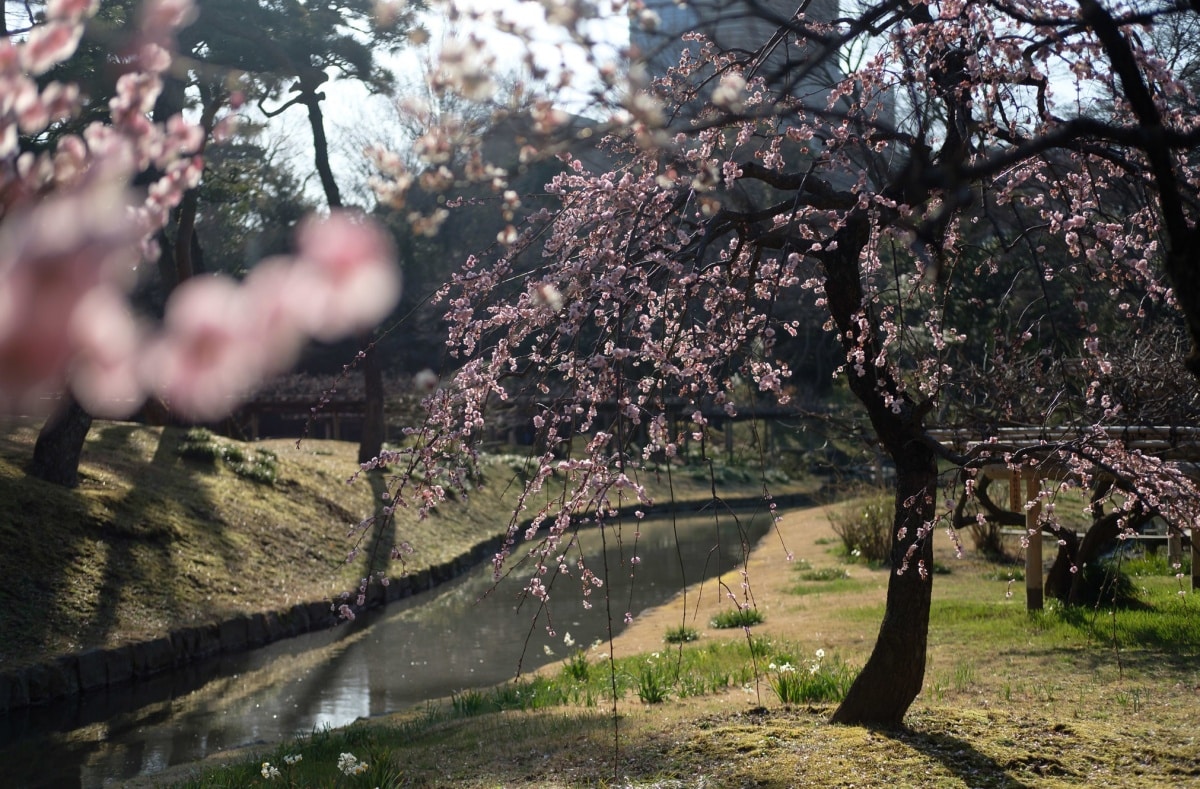
Koishikawa Korakuen by 8ware https://flic.kr/p/22n5uoC
Koishikawa Korakuen is one of Tokyo’s oldest gardens, built in the Edo Period (1600-1868), and its walking trails wander through various areas that have their own spotlight season. The garden has irises, gingko trees, cherry blossoms, and of course, plum blossoms.
The plum tree area has 150 trees of 40 different varieties, and the park holds an ume matsuri (plum blossom festival) every year. This year, it is from February 3 to March 3, and features a Noh performance and tea experience on February 23 and 25, as well as other activities. This is a great place to feel like you’ve gone back in time without leaving the modern comforts of the city!
Access from Tokyo Station: Around 10 minutes total via the Marunouchi Line.
More information: https://www.tokyo-park.or.jp/announcement/030/detail/54163.html#googtrans(en)
Yushima Tenjin
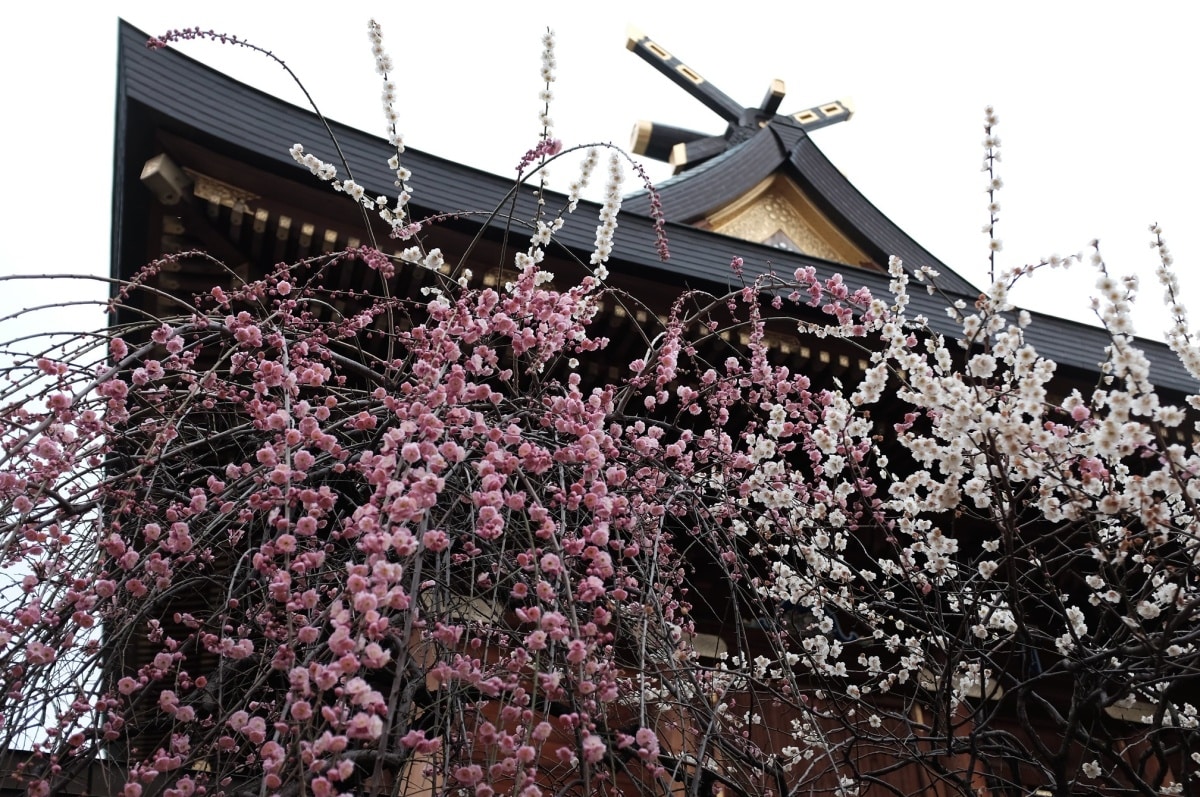
Plums at Yushima Tenjin by Zengame https://flic.kr/p/qzFm78
Yushima Tenjin is a Shinto shrine that goes all out with its annual plum blossom festival. It features all sorts of performances and activities on the weekends between February 8 and March 8. That includes taiko drum performances, rakugo storytelling, and even less traditional entertainment like belly dancing and Hawaiian Hula dancing!
Even if you don’t come for the performances, you can simply enjoy the floral aromas and pink hues of the 300 plum trees around the shrine grounds.
Access from Tokyo Station: Around 15 minutes total via the Yamanote Line and on foot.
More information: https://www.yushimatenjin.or.jp/pc/ume/2024/index.htm
Shinjuku Gyoen National Garden
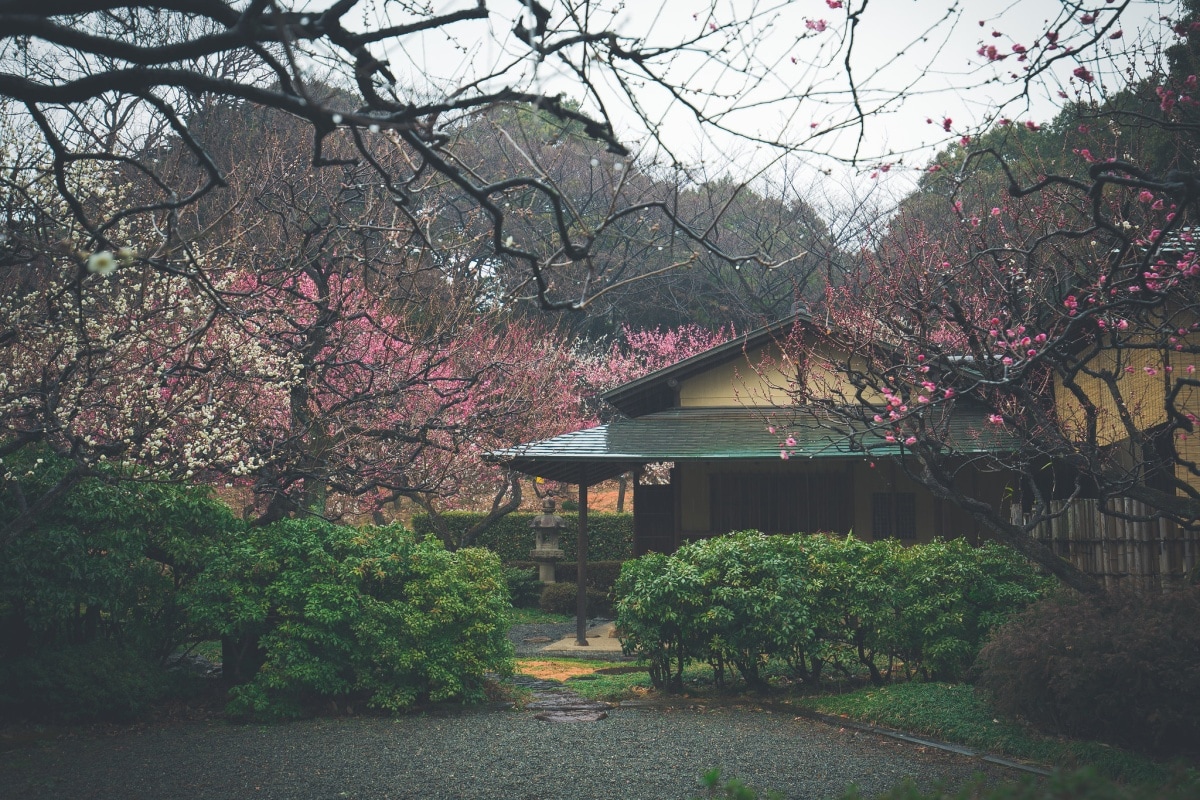
Plums at Shinjuku Gyoen by vr4msbfr https://flic.kr/p/QFZT7S
Shinjuku Gyoen is one of Tokyo’s most famous gardens, and given that it spans a massive 144-acre area, it’s not surprising that there are plum blossoms!
Despite being in Shinjuku, one of Tokyo’s busiest business areas, the park is a quiet and relaxing spot for walking. The 300+ plum blossoms here are not limited to one spot, but are dotted around the park, alongside a few kanzakura, an early-blooming winter cherry blossom. One of the most picturesque spots to find the plums is by the Raku-tei Tea House, where around 80 of them are planted.
Access from Tokyo Station: Around 20 minutes total via the Marunouchi Line.
More information: https://fng.or.jp/shinjuku/en/
Hamarikyu Gardens
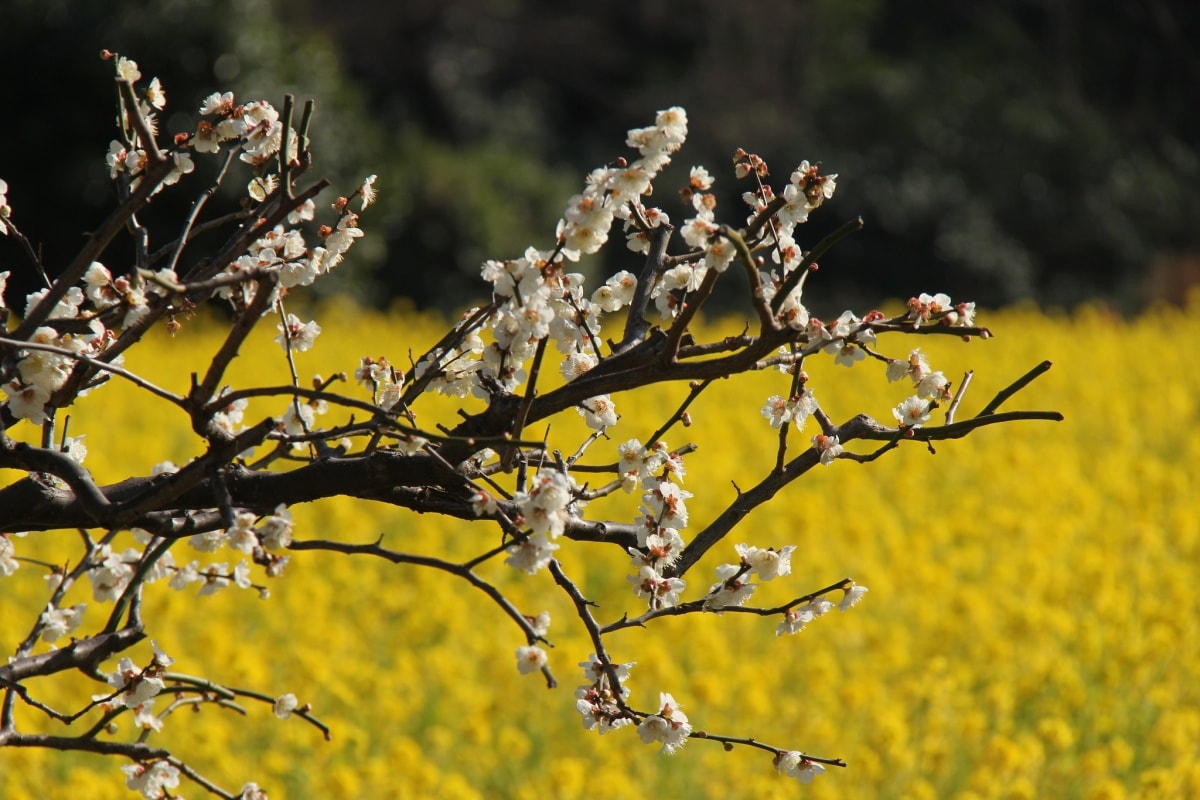
Rare siting of plums and canola flowers together by Yoichiro Uno https://flic.kr/p/9nWSvW
As well as the 130 plum blossoms, Hamarikyu Gardens is also home to a small field of bright yellow canola flowers. You likely won't see them both at full bloom together, as canola usually flowers the month following the plum season. But at least you know there will be other pretty flowers to see if you miss them!
Hamarikyu Gardens is an oasis of calm and tradition in central Tokyo, and it makes for a great stop if you plan to visit the nearby Tsukiji Market. The plum grove is towards the northeast corner of the gardens, but there are also ponds to explore and a variety of other flowers and trees that bloom throughout the year.
Access from Tokyo Station: Around 25 minutes total via the Yamanote Line and on foot.
More information: https://www.tokyo-park.or.jp/teien/en/hama-rikyu/
Yoshino Baigo and Ome Plum Park
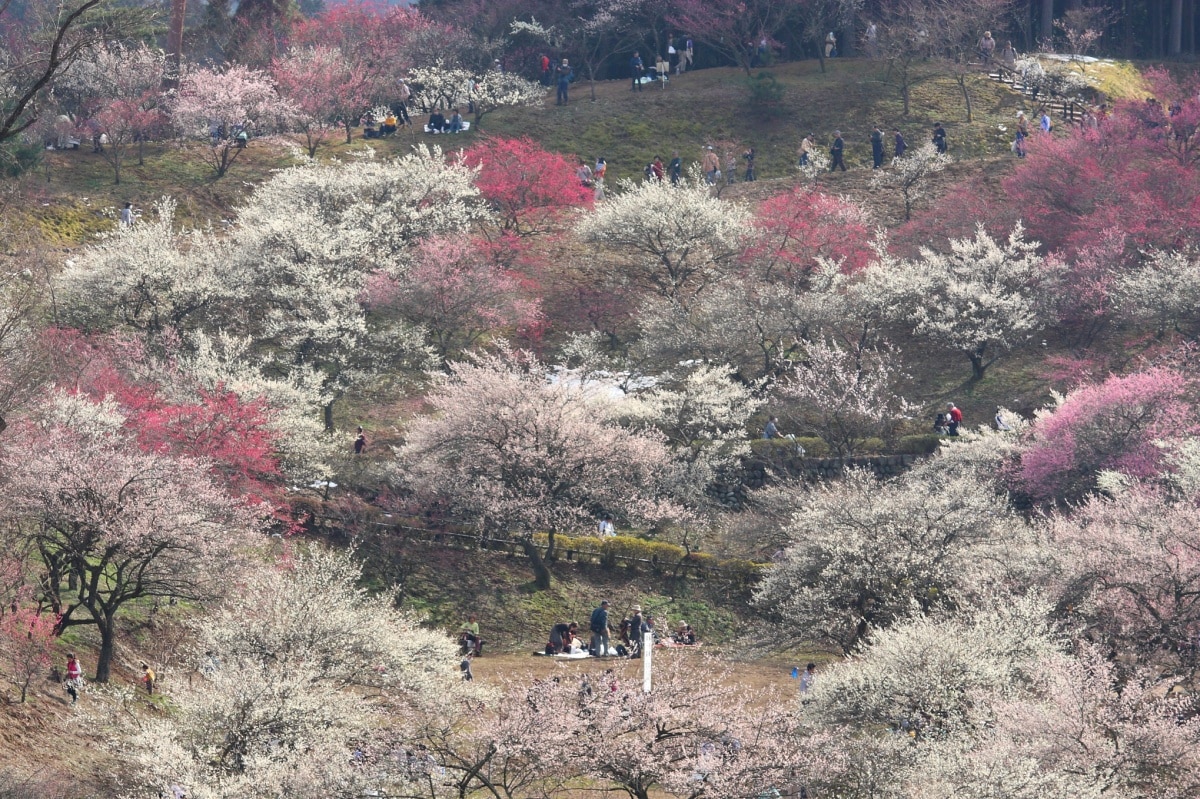
Plums at Yoshino Baigo by Yoshizumi Endo https://flic.kr/p/82B6r7
The plum blossoms at Ome’s Plum Park are still very new, so it is an exciting time to see the trees at a different stage to other parks. 1,200 plum trees were planted by 2019, and they already colour the park in whites and pinks each year.
Each year, the area also holds an ume matsuri with the Ome Plum Park at its center. This year’s festival will feature guided tours, a food market, and resident-led plum viewing festivities. The town is a fun place to explore, with restaurants, a kimono museum, and other historical spots.
Access from Tokyo Station: Around two hours total via the Chuo Line and Ome Line.
More information: https://www.omekanko.gr.jp/spot/81501/#googtrans(en)
Kogesawa Plum Grove (Hachioji)
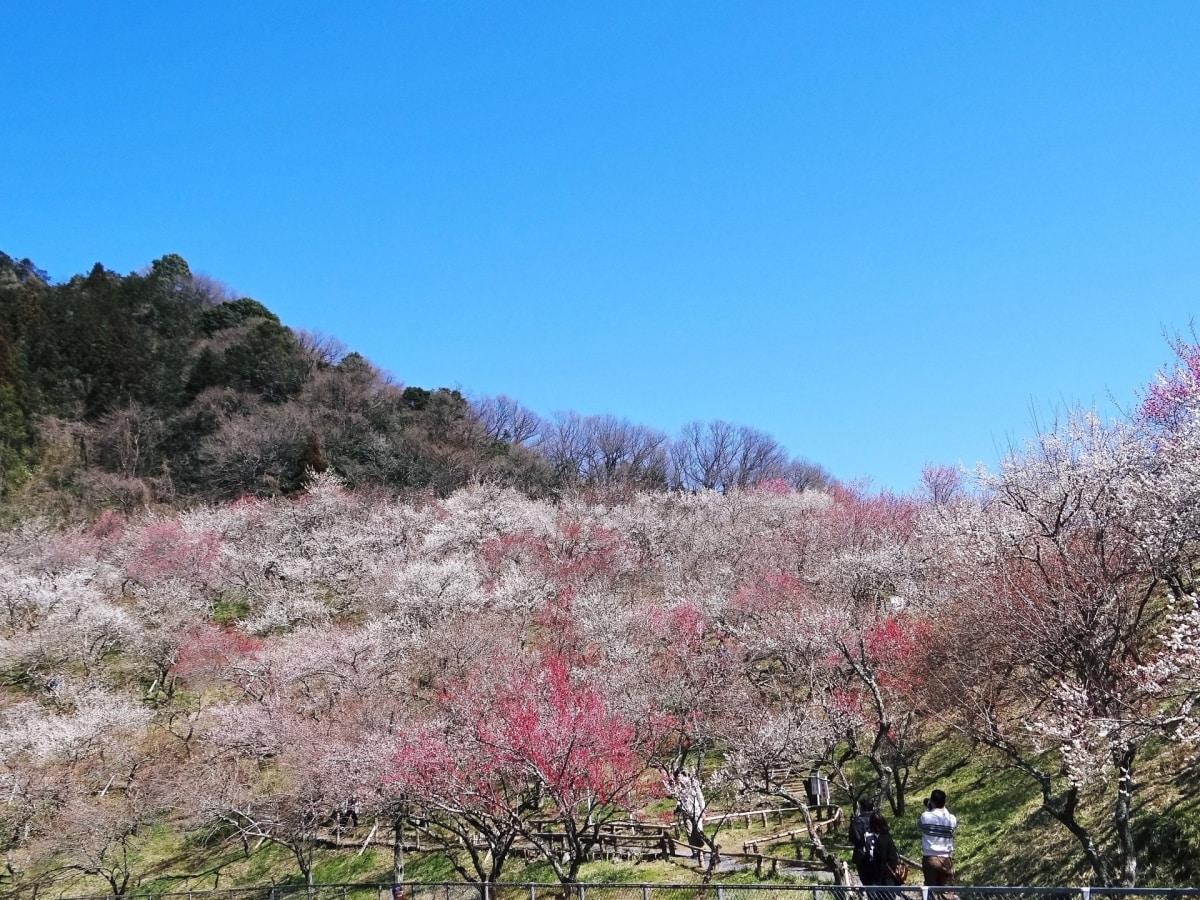
Plums at Kogesawa Plum Grove by napitomo / Photo AC
In a similar mountainous area to Yoshino Baigo, you’ll also find the Kogesawa Plum Grove not far from Mt. Takao. The plum grove is home to 700 plum trees of different shades of white and pink.
In addition to the Kogesawa Plum Grove, the entire area along the Minami Asa River, known as Takao Baigo, is covered in plum blossoms. There are several other plum gardens in the area, leading to an impressive total of 10,000 trees!
Access: Around two hours total via the Chuo Line and the Taka 01 bus.
More information (Japanese): https://www.city.hachioji.tokyo.jp/kankobunka/001/p030297.html
Shiba Koen
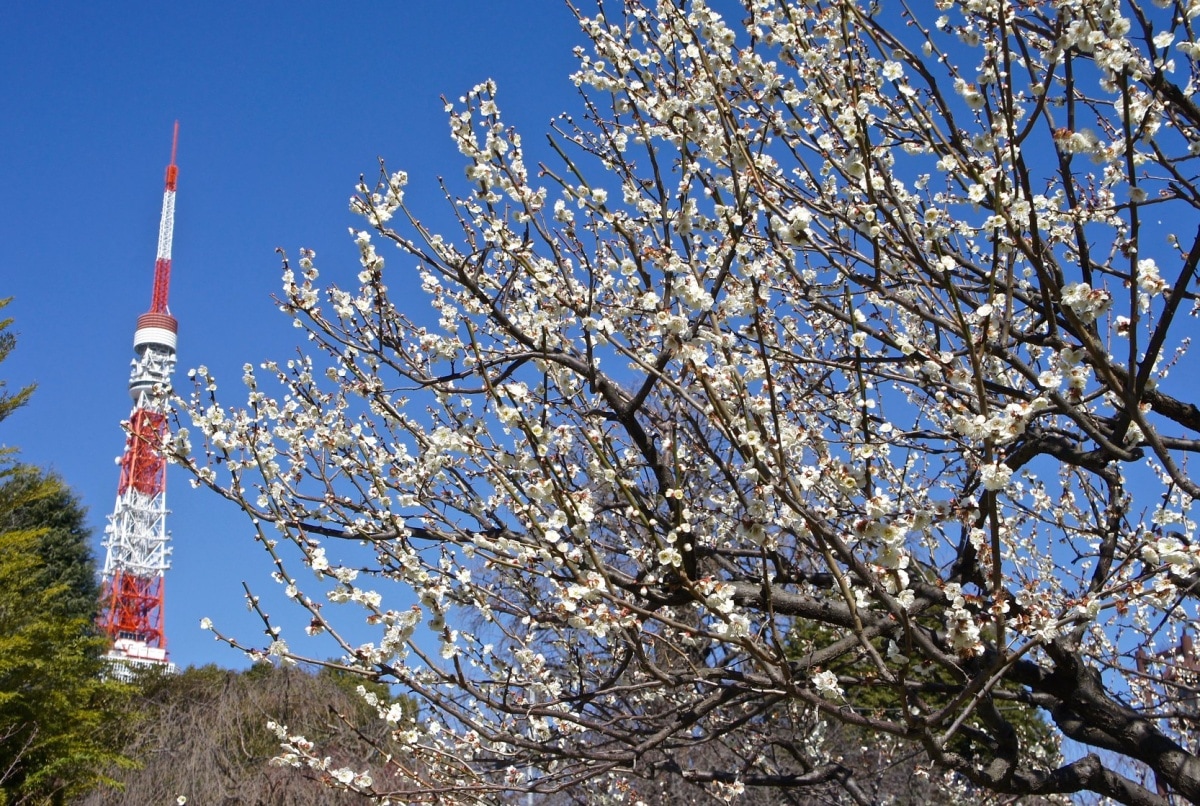
Plums and Tokyo Tower at Shiba Koen by Manish Prabhune https://flic.kr/p/EH8YQz
Shiba Koen (park) has been around for 150 years, and its 70-tree-strong plum grove has long been known as gin sekai, or “snowscape” for its beautiful pale petals.
The best time to see the plum blossoms at Shiba Koen is usually in mid February. The park is close to Zojo-ji Temple and Tokyo Tower, making it a good place for photos.
Access from Tokyo Station: Around 20 minutes total via Yamanote Line and on foot.
More information: https://www.tokyo-park.or.jp/park/map/shiba_eng.pdf
Tsukuba Bairin (Ibaraki, outside Tokyo)
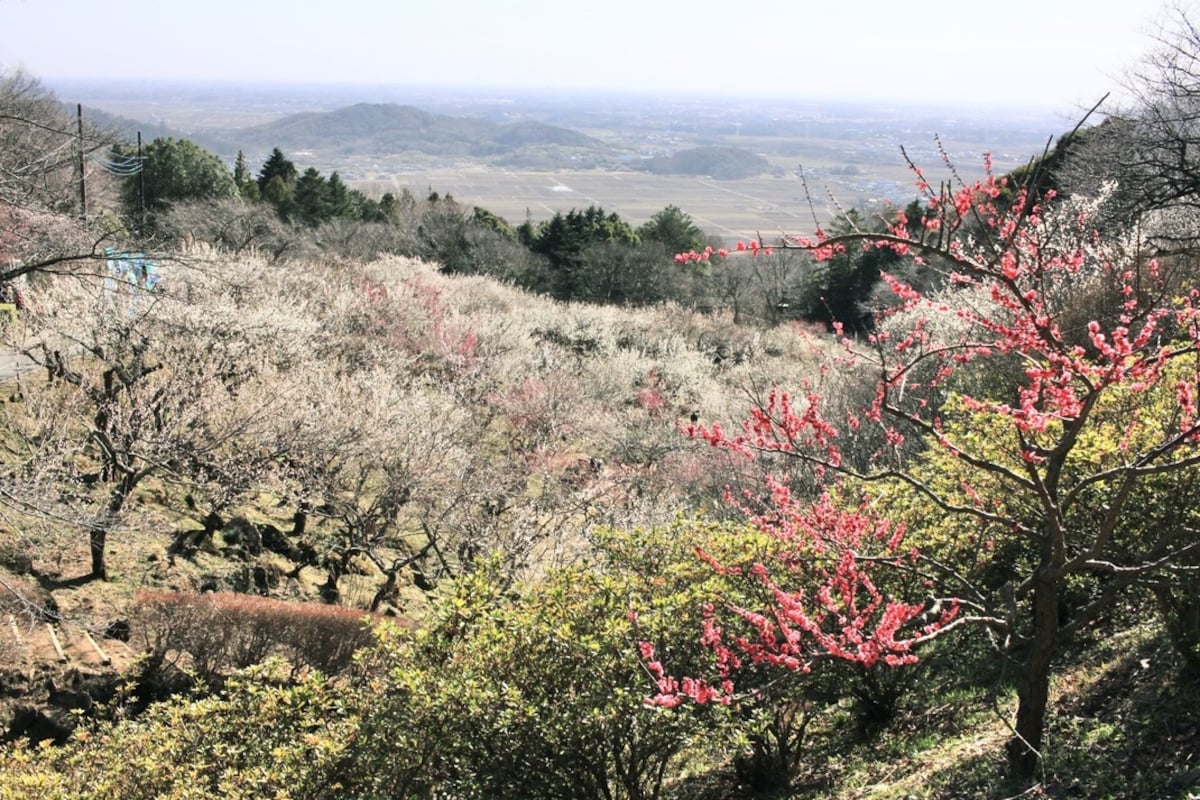
Plum blossoms at Tsukuba Bairin by Cassandra Lord
Our final two plum tree spots are so pretty they’re worth the day trip out of central Tokyo.
Mt. Tsukuba is one of the “100 Famous Japanese Mountains,” and partway up the mountain is the Mt. Tsukuba Plum Grove. It has around 1,000 plum trees covering a hillside, with the earliest ones beginning to bloom at the end of January.
The Tsukuba Ume Matsuri is from February 17 to March 17, and has guides to tell you about the different kinds of plum blossom, as well as some food stalls. Next door there is the Forest Adventure zipline park, and the Mt. Tsukuba Shrine is just a 15-minute walk away, which is also the start of the hiking route.
Access from Tokyo Station: Around two and a half hours by highway bus to Tsukuba Center, followed by a local bus, or via Tsukuba Express followed by a local bus.
More information: https://umematsuri.jp/#googtrans(en)
Soga Plum Grove (Kanagawa, outside Tokyo)
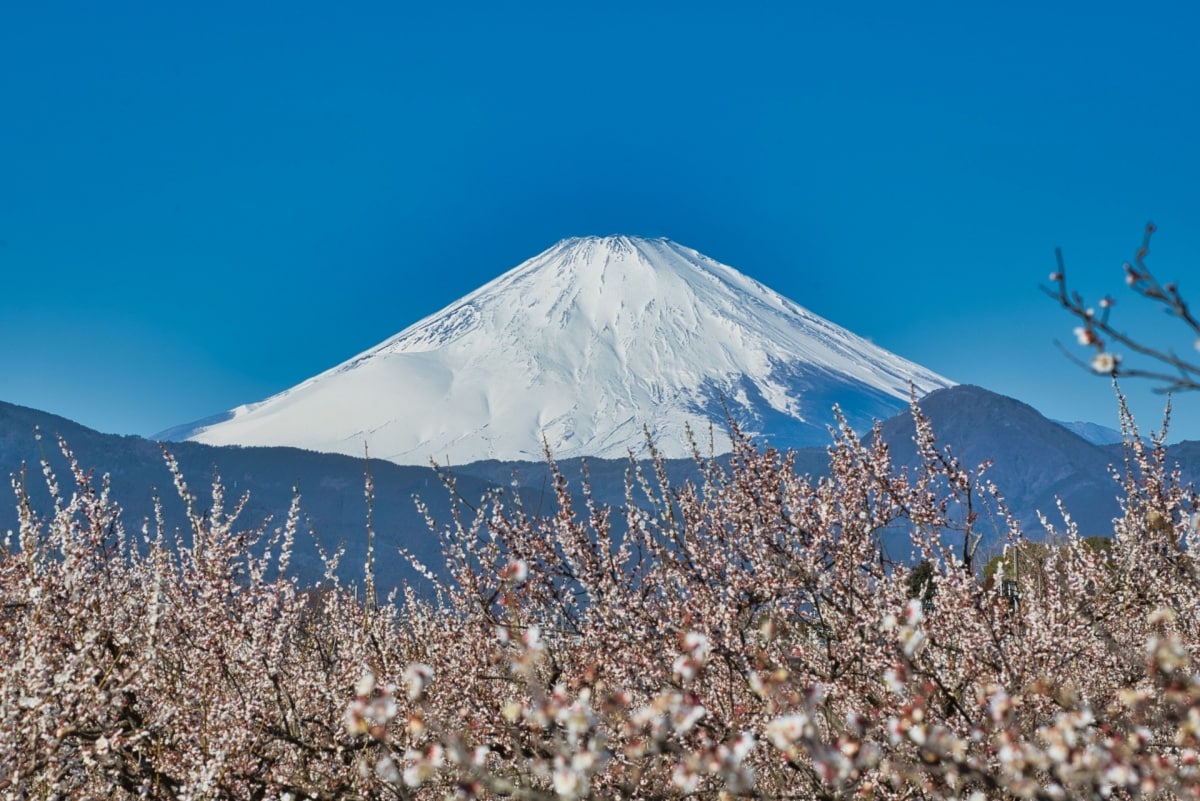
Plums at Soga Plum Grove by ぶん吉 / Photo AC
We’ve saved the most spectacular for last, as the Soga Plum Grove is home to an incredible 35,000 blossoming plum trees against the stunning backdrop of Mt. Fuji.
The plums at the Soga Plum Grove usually bloom later than those in Tokyo, with their peak starting in mid February, however, this year they are set to start earlier due to the warm weather. The ume matsuri runs from February 3 to 29, with special activities on the weekends like taiko drum performances, the Kotobuki Lion Dance, and food stalls with plum-themed snacks and drinks.
Access from Tokyo Station: Around one hour 40 minutes total via the Ueno-Tokyo Line and Gotemba Line.
More information: https://trip.pref.kanagawa.jp/destination/soga-plum-festival/463



